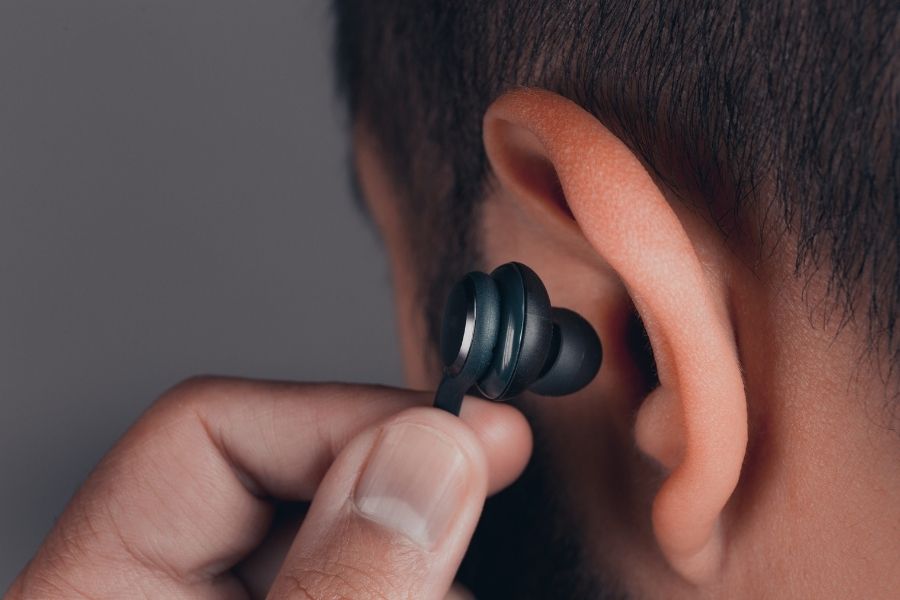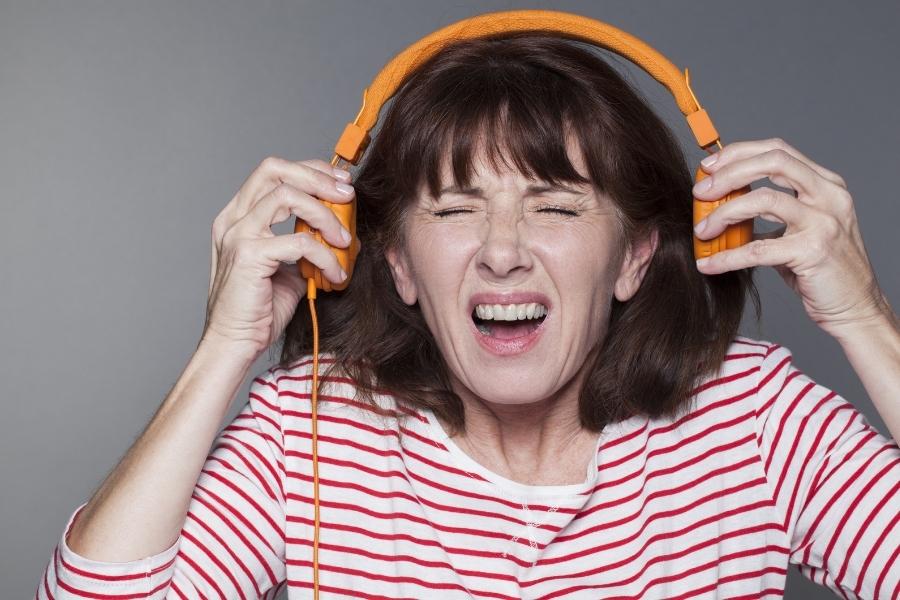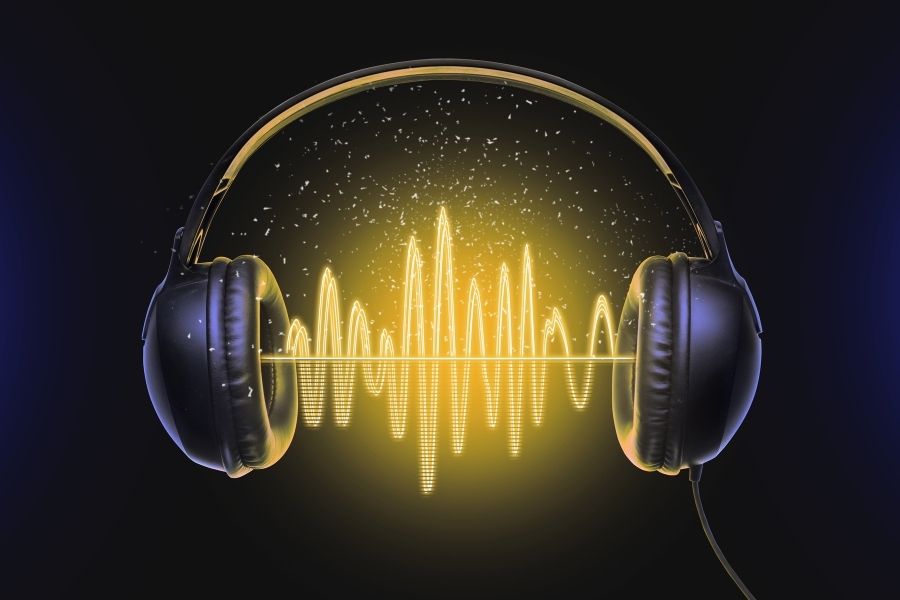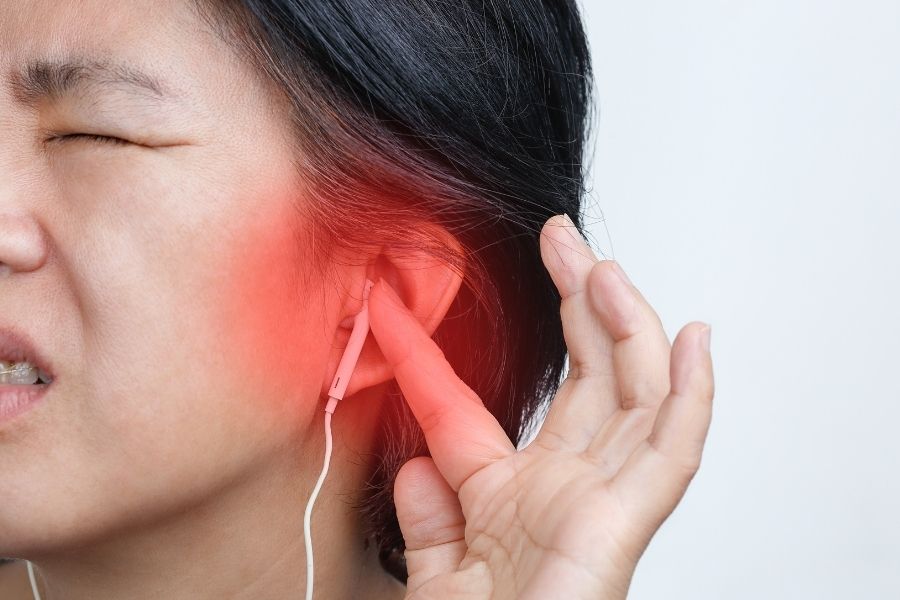From daily commutes to bedtime routines, earphones have become a constant companion for millions. Among younger people, prolonged use of earphones and headphones has become second nature — whether it’s to enjoy music, binge-watch content, attend virtual meetings, or participate in online classes. But doctors warn that this convenience may come at a steep cost. A steady rise in hearing problems, infections, and even social detachment is being linked to this habit.
Hearing loss, previously considered a problem of old age, is increasingly being diagnosed in teenagers and young professionals. Medical professionals are now sounding the alarm, urging the public to rethink how and how long they use earphones each day.

Loud volume, long durations, and environmental noise pollution together ‘create the perfect storm leading to early deterioration of hearing,’ say doctors Shutterstock
The most alarming consequence of overusing earphones is Noise-Induced Hearing Loss (NIHL). Many users crank up the volume to drown out external noise, unknowingly putting their ears under extreme stress. According to NVK Mohan, senior consultant in the department of otology and ENT at CMRI Hospital, listening to audio at levels above 60 percent of maximum volume for more than 60 minutes a day can permanently damage the sensitive hair cells in the inner ear. These cells do not regenerate, meaning that the hearing loss is irreversible.
He notes that “we are actually witnessing a very disturbing increase in hearing loss among call centre employees, online learners, and young music listeners,” suggesting that lifestyle changes and work-from-home routines are contributing to the problem.
Similarly, Chirajit Datta, ENT head and neck surgeon at CMRI Hospital, has observed a growing number of younger patients coming in with hearing complaints. “Hearing loss was once mostly seen in the elderly,” he says, adding, “But today, it has become more commonly treated in young adults and teenagers for irreversible damages that are a direct result of prolonged headphone and earphone usage.” He adds that excessive volume, long usage durations, and environmental noise pollution together “create the perfect storm leading to early deterioration of hearing.”

Prolonged use increases the chance of ear infections due to trapped moisture and bacteria buildup Shutterstock
While hearing loss is the most widely discussed risk, many users overlook the threat of ear infections. In-ear devices — especially those worn inside the canal — can restrict ventilation, allowing moisture and bacteria to build up. This environment is ideal for infections, particularly when earphones are not cleaned regularly or are shared among users.
“Wear and tear of ear canals from wearing any form of in-ear devices like earphones can contribute to wax impaction and infections,” explains Mohan. “These devices lock in the natural ventilation of the canal, which can make things worse.”
Debayan Tarafdar, consultant ENT & head and neck surgeon at Techno India Dama Health Care, echoes the concern, adding that “prolonged use also increases the chance of ear infections due to trapped moisture and bacteria buildup, especially when earphones are shared or not cleaned regularly.”
While these infections may begin as mild discomfort, they can escalate into more serious conditions requiring medical intervention — and potentially lead to temporary or permanent hearing damage.

Excessive earphone usage can also take a toll on mental health Shutterstock
Beyond the physical damage, excessive earphone usage can also take a toll on mental health and interpersonal relationships. As users become absorbed in their own audio world, they often disengage from those around them.
“Constant earphone use can reduce social interaction and awareness,” warns Tarafdar. He emphasises that this detachment can gradually lead to isolation from family and friends, especially among younger users who are already vulnerable to the effects of digital overuse.
Such habits can also dull environmental awareness, increasing the risk of accidents — whether walking on busy roads or commuting on public transport while plugged in.

Doctors unanimously agree that over-the-ear headphones with noise-cancellation are a far safer option than in-ear devices Shutterstock
While the risks are significant, solutions do exist. Doctors unanimously agree that over-the-ear headphones with noise-cancellation are a far safer option than in-ear devices. These headphones reduce the need to increase volume in noisy environments, protecting the ears from high decibel levels.
According to Mohan, “the safer method would be with over-the-ear headphones with noise-cancellation, as it lessens the need to increase volume in noisy environments.”
But safer equipment alone isn’t enough. Datta emphasises the importance of education and conscious use. As with many modern health issues, early awareness can go a long way in prevention. Simple steps like limiting listening time, maintaining moderate volume, cleaning devices regularly, and choosing over-the-ear alternatives can protect both hearing and overall health.
Our ears are finely tuned instruments — once damaged, they don’t bounce back. In a world filled with digital noise and audio distractions, taking proactive steps to protect hearing has never been more crucial. What begins as harmless listening can gradually become a health hazard, one that sneaks in quietly and stays for life.
The message from ENT specialists is clear: be smart, listen safe, and educate yourself and those around you. Because sometimes, the loudest warning is the one we don’t hear — until it’s too late.
